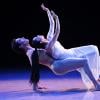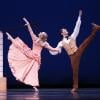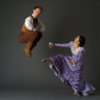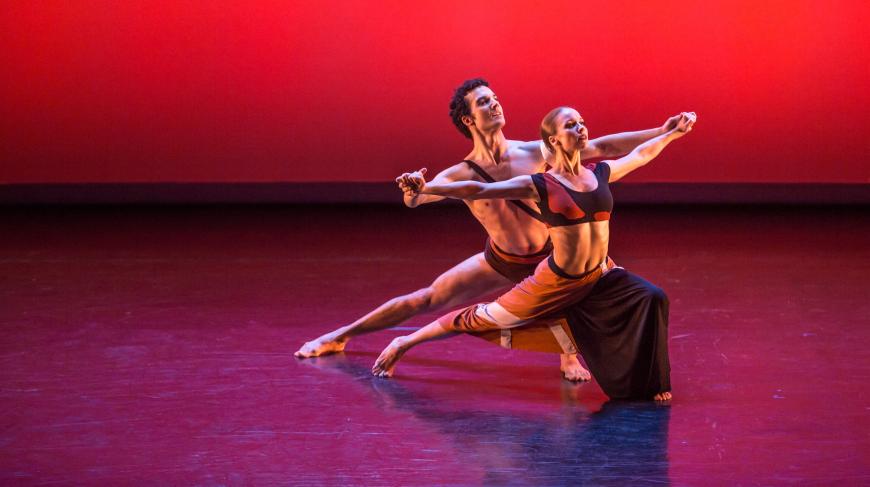
Although the Martha Graham Dance Company won’t officially turn 100 until 2026, the centennial celebration of the oldest dance troupe in America will stretch over three years and begins on Sept. 30 at The Soraya in Los Angeles. But if you’re wondering why the New York-based company, under the artistic direction of Janet Eilber since 2005, should kick off its tour in the City of Angels, “it is,” said the former Graham dancer in a phone interview, “the birthplace of American modern dance.”
“Yes, Isadora [Duncan] broke some molds and raised some eyebrows, but she was in Europe for so much of her career,” Eilber explained. “Denishawn [founded by the husband-and-wife team of Ruth St. Denis and Ted Shawn] was so influential to American dance, not just for its dancing and choreography but for the fact that it was a business and school [that was active from 1915 to 1931 and located on a hill just west of downtown L.A.].
“It changed America’s perception of dance,” Eilber added. “And Martha emerged out of that school and that whole new approach to dance in America. It elevated the reputation of dance, and Martha took it from there. It’s the roots of her whole journey.”
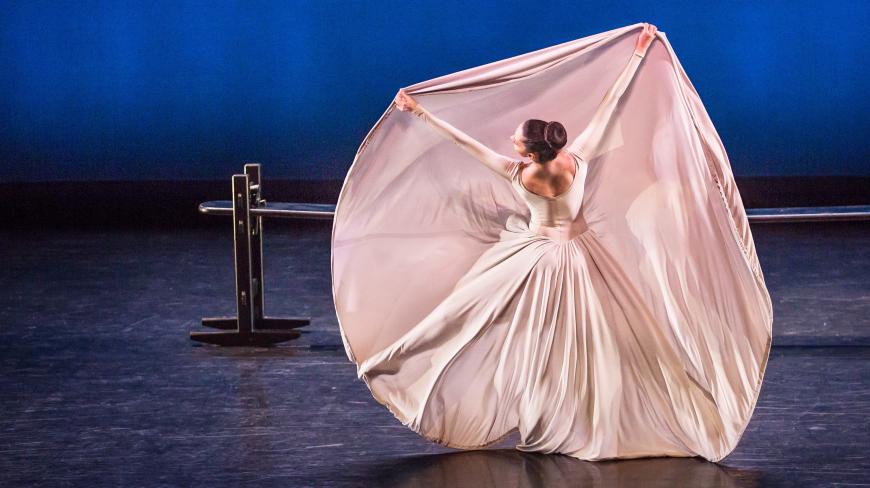
That journey, in addition to the founding of Graham’s eponymous troupe in 1926, would yield such masterpieces as Dark Meadow (1946), highlights from which are part of the program at The Soraya. The score for that work, composed by Carlos Chávez, who received one of the first music commissions for modern dance from the Library of Congress, will be played here by the contemporary ensemble Wild Up, led by Artistic Director Christopher Rountree.
Also on the program: Serenata Morisca, a solo created by the above-mentioned Shawn to a Mario Tarenghi score, which Graham danced in 1916 when she was in the Denishawn troupe, and Maple Leaf Rag, with music by Scott Joplin that will be performed by pianist Vicki Ray. The latter work — Graham’s 181st dance, from 1990 — is the last that she created before her death in 1991 at age 96. Add to these classics the world premiere of a new production of Agnes de Mille’s 1942 piece of Americana, Rodeo, with Aaron Copland’s original score reorchestrated by Gabe Witcher for a bluegrass ensemble, and the evening frames the Graham legacy in new ways.
For Rodeo, Eilber and company collaborated with Diana Gonzalez, who was assistant to de Mille from 1987 to 1993 and is the associate director and repetiteur for The De Mille Working Group, which oversees the licensing and production of the choreographer’s works.
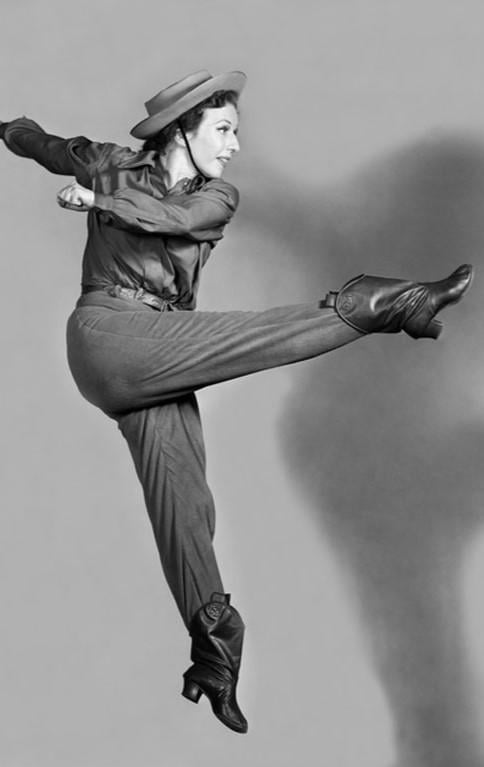
Originally made for the Ballet Russe de Monte Carlo, Rodeo premiered at the Metropolitan Opera House, with de Mille performing the lead role of the Cowgirl and reportedly taking 22 curtain calls. And while numerous ballet companies have performed Rodeo since, this staging for Graham is a first for any modern dance troupe and features a cast of 16.
Gonzalez explained that while teaching Rodeo to the Graham dancers, “they really took to it. In the beginning, some were walking like ballet dancers, and I said, ‘No, no. I want what’s in your bodies as modern dancers.’ As Agnes used to say in rehearsal, even with other ballets, ‘I want you to come into the studio not as swans and sylphs but as human beings.’”
Gonzalez continued: “In Fall River Legend [1948], about [axe murderer] Lizzie Borden, even though [the character is] in pointe shoes, Agnes never wanted her to walk through the pointes but [rather] parallel, through the heel. The gesture was always grounded, [and] the walking, the posture for de Mille is very human. I think that [the Graham dancers] enjoying this different approach and style of storytelling.”
Copland’s score for Rodeo is a celebration of the American West and the second of his “cowboy ballets,” the first being Billy the Kid. Rodeo’s folk song-infused style, with square dance tunes and polyrhythmic vamps, seemed a natural fit for Witcher, a Grammy Award-winning fiddler, composer, and arranger best known for his work with the genre-bending acoustic quintet Punch Brothers.
Witcher said that, on Gonzalez’s suggestion, the Graham people had reached out to him last fall about arranging Copland’s music. “I’ve never done a ballet or even played in a pit orchestra for a ballet,” he said. “I’ve been familiar with the score [for Rodeo] for quite a long time. The final movement, “Hoe-Down,” is a standard in the old-time bluegrass world, [but] it was the first time I dove deep into the score and got a sense of details.”
Witcher explained that his new instrumentation — fiddle, mandolin, acoustic guitar, banjo, upright bass, and cello — will highlight the music’s Black origins. “There’s a lot of Black string band music that was basically source material for what Copland was writing but is not well known. A lot of it was never recorded. It’s in line with what Rhiannon Giddens has been doing for the past 25 years. My familiarity with her work and music, and setting that in different contexts, I can help incorporate that into my approach for how I’m presenting the [Copland] work within this ensemble.”
Set on a ranch in the American Southwest, the five-section Rodeo is a love story centered around the Cowgirl and the Head Wrangler. Laurel Dalley Smith, 34, from Bath, England, has been with the Graham troupe since 2015 and is performing the female lead. Speaking by phone from Pennsylvania, where the Graham company was recently on tour, Dalley Smith said she’d seen clips of the original ballet but never the piece in its entirety.
“Culturally, coming from the U.K.,” she said, “ranching, herding up cows on horseback, and a rodeo are not a British way of life. But it’s been wonderful and fascinating to actually do my own research into [the ballet]. The original cast was from all over the world, like our company is, and we’re the first modern company to do it.”
The dancer added that her research entailed reading reviews and looking at pictures of de Mille and of actual rodeos. “People riding, how they hold themselves, how they walk, how they dress — that’s been really interesting. And the moves that we do are so iconic that when you do them, you say to yourself, ‘I’ve seen this picture.’
“The bull is almost bucking in the air,” she continued, “and you see the cowboy on top, with one arm holding the reins, the other holding back. The stomping of the feet, the dust flying around you — it’s a literal piece in that way. The movement feeds what the story is.”
Dalley Smith went on to say that she’s especially excited to perform to live music. “It’s going to be fantastic. There are so many signature motifs and traditional songs used within the ballet. To hear those on banjo or mandolin, it’s fantastic. I love dancing to live music. It adds another element.” The new production also features digital projections by Beowulf Boritt and dreamlike costumes by Oana Botez.
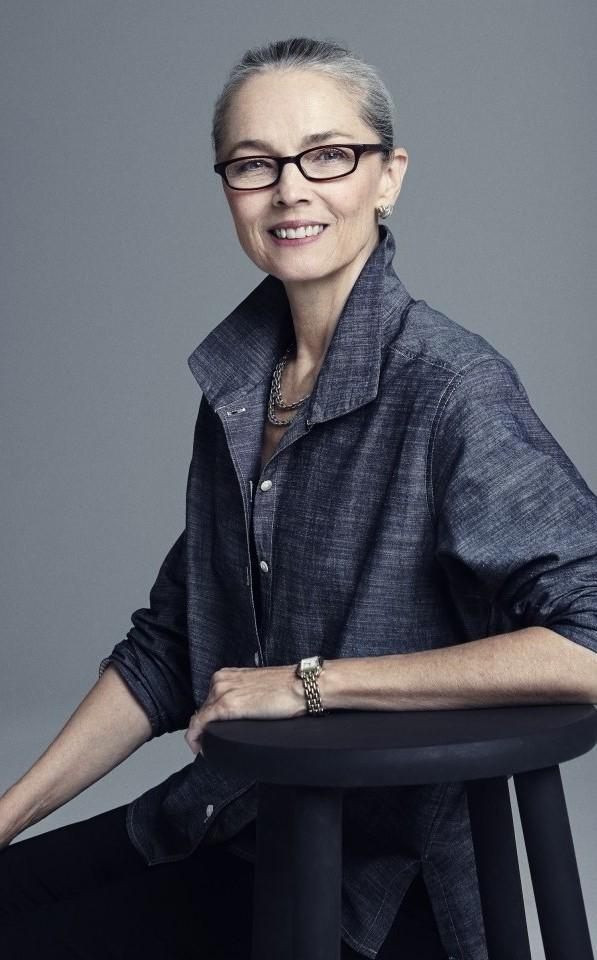
It’s no coincidence that the works on the program at The Soraya are all “connected by the composers,” noted Eilber, whose diverse initiatives, thematic programming, commissions for today’s top choreographers, and use of new media and technology — the Graham company’s Instagram feed has more than a quarter of a million followers — have all helped define what a dance company is in the 21st century.
“[Take] the fact that Rodeo has a new bluegrass arrangement,” Eilber said. “We wanted to open a conversation about the roots of American music. It’s an expanded and more inclusive view of the 20th century as we bring these iconic pieces back to the angle on bluegrass and Copland and Chávez. There were letters exchanged between Martha and [Chávez], complaining about Europe and [the lack of] an American sound.
“They were searching for an American sound, which includes Mexico,” the director emphasized. “As Martha was searching for American dance and breaking away from Denishawn and other cultures, [such as] escapist decorative dance, [she gravitated toward artists like] Joplin, a pioneer of [classic] ragtime, and [Maple Leaf Rag] will also [have] that underlying theme.”
Dancing to live music is a rarity these days. But for the past decade, the Graham company has maintained a relationship with The Soraya and Executive and Artistic Director Thor Steingraber, who introduced the troupe to the musicians of Wild Up.
“The reason,” Eilber said, “that the troupe can have live music is because of Thor. He’s so attuned, not to make a pun, to the spontaneity that’s added to a performance when dancers dance to live music. They use their sense of hearing in a totally invigorated way that doesn’t come into play when you use prerecorded music.”
Steingraber, who began discussing the 100th anniversary with Eilber five years ago, gave some additional background. “In the company’s second appearance at The Soraya, Janet and I conceived of an evening we called ‘Graham and American Music,’ which was an evening of pieces that were all accompanied by compositions that Martha Graham had commissioned. When a choreographer invests so much of her efforts into the creation of music for her pieces, it’s not such a stretch to say her role in commissioning music is not only central to dance but also to 20th-century music.”
Steingraber takes pride in the fact that The Soraya now has a deep history with the Graham company. “This is their sixth appearance with us, and I think it’s thrilling, which is an overused word, but Graham dancers in the presence of live musicians are different creatures than performing to a recording.”
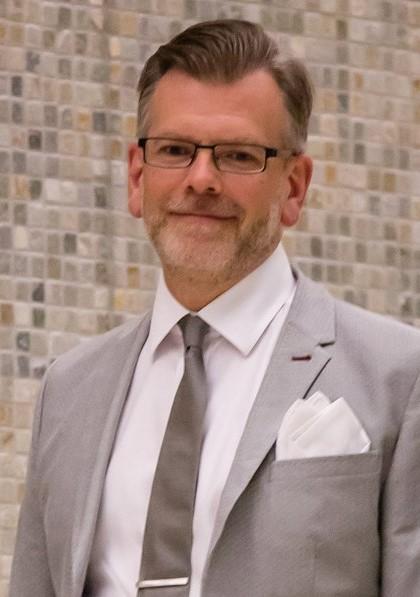
Another fascinating aspect to the anniversary program is that Graham and de Mille had a longstanding friendship. “Agnes was about 10 years younger than Graham,” noted Eilber, “and she regarded Martha as a mentor, really, someone who, when Agnes was at her low point and thinking about giving up choreography, bucked her up.”
Gonzalez added, “I’ve heard some people say they were ‘frenemies.’ I don’t really believe that. I think Agnes was absolutely fascinated by [Graham] and spoke about her being like Picasso, a genius of the 20th century. There was a healthy competition between them — not even competition, really. Martha knew what she was doing was epic, and Agnes was always in awe of her.”
The show at The Soraya should also prove to be epic, considering it opens with a piece that Graham danced in 1916 and closes with a work she choreographed in 1990. “I’m biased,” said Steingraber, “but I think it’s a genius program, and it covers a wide range of what American culture means. There’s also an intense diversity about it. We’ve literally bookended Graham’s life with 75 years of choreography.”
As for Graham’s legacy and continued relevance, the brilliance of her choreography can perhaps be described in three words: “movement never lies,” an idea passed on to Graham by her father, a doctor who specialized in mental disorders. Eilber elucidated: “Martha’s movement only is art when it is totally married to an emotional idea. A dancer has to fill the movement with meaning for it to be onstage.
“Her choreography,” Eilber added, “was created with meaning in mind. Martha just didn’t make up a bunch of steps and say, ‘This will be dramatic.’ She takes the audience on an emotional journey. She didn’t want [a dancer] to act. She wanted the emotion to be embedded so the movement could tell the story. It speaks to the fact that she was stripping away, getting down to essences. ‘Movement never lies’ is the essence of everything she was going for.
“She only wanted the tiniest movement,” the director pointed out, “the most basic movement that would deliver the message. Look at Lamentation [Graham’s 1930 expressionist solo encapsulating grief]. It’s under four minutes, and each move is a torque, a pain, a stretch. No pirouettes, nothing showy, nothing decorative. You can’t even see the dancer’s arms and legs, [yet] it’s the essence of movement.”


